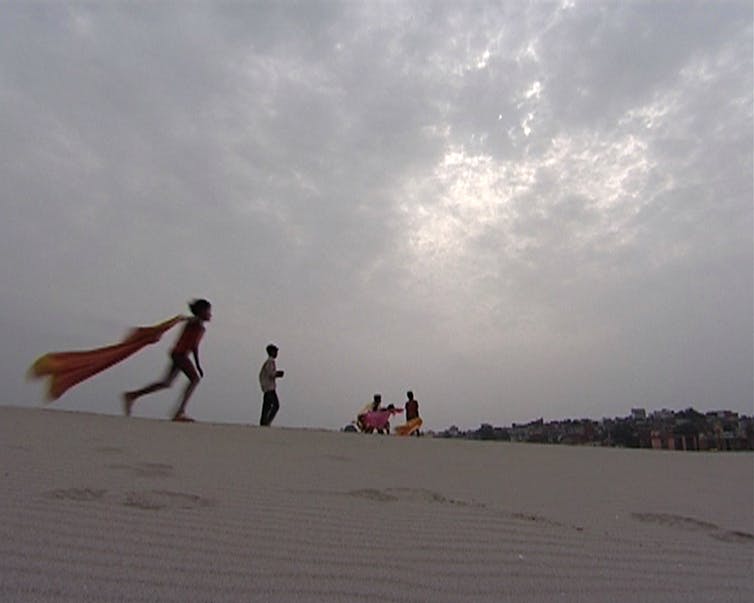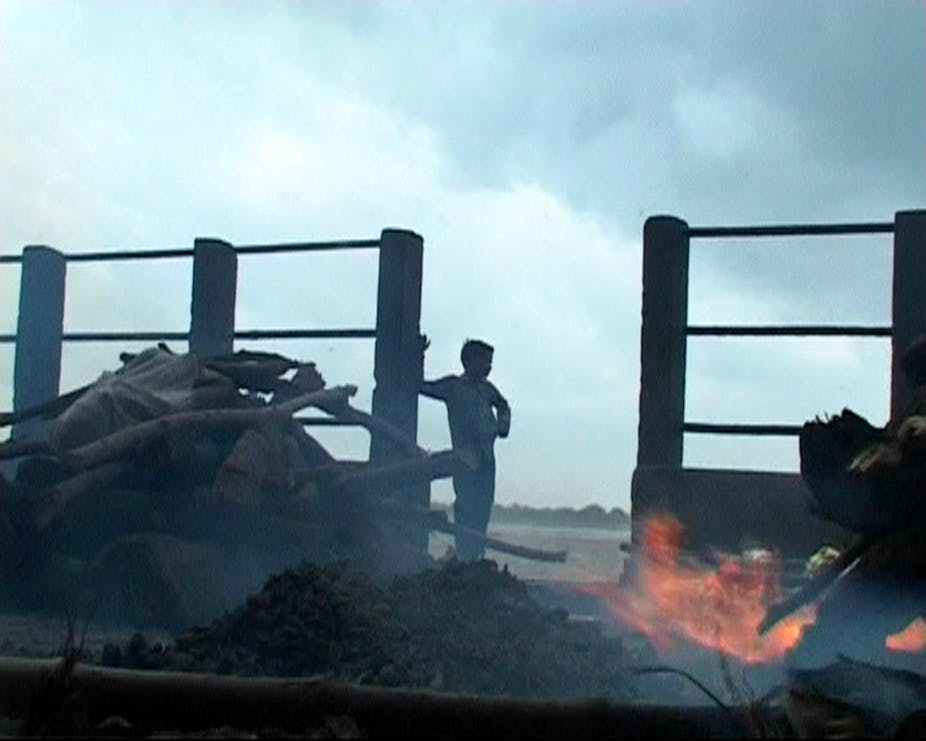Rajesh Jala’s Children of the Pyre (2008) is one of seven documentary features in the India in Flux: Living Resistance strand at the 2014 Melbourne International Film Festival (MIFF).
The film is a finely balanced ethnography, which oscillates between matters of life and death, between tragedy and optimism. Reminiscent of Mira Nair’s Salaam Bombay (1988) and Justin Peach’s Lonely Pack (2009), the film chronicles the lives of seven adolescent boys who live and work at India’s most sacred cremation ground in the holy Hindu city of Varanasi.
The promise of Moksha, or salvation, means that hundreds of thousands of Hindus are cremated on wood pyres at Manikarnika Ghat, the open-air crematorium on the banks of the river Ganges. The crematorium never shuts. Once the priests and the families have retired after saying their prayers, it is the boys who step in. They turn over the slow-burning corpses, fanning the pyres and pilfering the resalable shrouds to make a meagre living.
The filmmaker
Jala’s unsentimental film is the product of two years of filming and a relationship of immense trust between him and his young film subjects. A political refugee from militancy torn Kashmir, Jala fled to Delhi in 1990 and lived in a refugee camp until 1998. The traumatic experience of exile shapes his philosophy of art; he aspires to make cinema that reveals the human aspect of conflict.
Thus what could have been a shrill or voyeuristic gaze into an unfamiliar world is, in Jala’s film, an even-handed but unflinching look at the conditions in which the boys work. Jala is particularly interested in their labour and in translating the conditions of the extraordinary space in which they work into the idiom of cinema.

Jala approaches the narrative of labour through multiple angles. Stealing shrouds is a form of petty crime but Jala accords it the status of labour in a space where the boys are in fact shown working extremely hard and for long hours.
Jala’s camera stands by and watches the petty fights and arguments that erupt as each shroud is snatched from a burning corpse. The camera dwells at length on the inferno-like conditions in which this labour occurs. Often the mise-en-scène is composed with the young subjects in the foreground positioned against a burning pyre in the background, the visual arrangement at once disturbing and evocative.
The factors that produce the inner state of the young subjects form a vital area of Jala’s inquiry. Manish and Ravi speak at length about the frightening dreams and the ghosts – but it is the silence, gestures and body language that interest Jala.
The sadness, the premature wisdom, the lies, the violence, aggression and hopelessness testify to the social construction of human nature and human self. With an unflinching but deeply sympathetic gaze, Jala captures an interiority that shifts the film from merely a record of the visible towards a complex realm of the psychological.
A new Indian documentary cinema
Moving away from the classic historical aesthetics of Indian political documentary such as juxtaposition, talking heads and collective speech, Jala treats the space, film subjects and issues with considered artistry, a hallmark of new Indian documentary cinema.
Cinematic techniques, contrasting colour palette, tonal music, meticulous close-up cinematography and variable film speed impart a poetic visual texture to the film and create space for subjective modes of spectator engagement. Without resorting to exoticism, Jala conveys the paradox between the quotidian and the extraordinary through well-placed observations. After watching a public dance performance, Manish quietly notes:
the girls were dancing on one side, the bodies were burning on the other.
The compelling narrative raises several questions of both local and universal importance.
In relation to India, the film exposes the irregularity of “growth” and claims of economic development in relation to one of its most vulnerable social groups. It pointedly refers to the ongoing caste-based discrimination in a nation that prides itself on its expanding middle class. But the universal questions it raises are about the relativist notions of childhood – and about the acceptance of brutality.
The Melbourne International Film Festival 2014 runs until Sunday August 17. See all MIFF 2014 coverage on The Conversation here.

